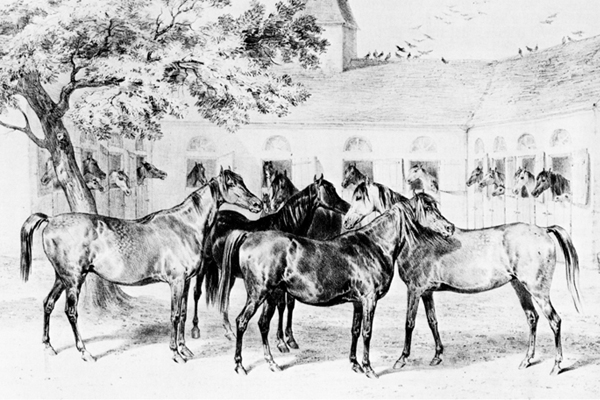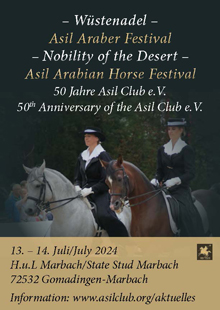In the 19th and early 20th centuries, the French government imported over 600 Arabian horses from the Middle East. But the purebred Arabian in France was always in competition with the Anglo-Arab – and had almost lost the battle.
Since the Crusades, France has always had a privileged situation in Asia Minor and the Middle East, which has enabled it to stock up on top quality Arabian horses from there. It was from the end of the 18th century, with the trip of the German explorer and zoologist Carsten Niebuhr to Arabia, of the Swiss orientalist explorer Jean-Louis Burckhardt in Syria and of course with the French expeditionary force under orders of Napoleon Bonaparte during the Egyptian Campaign that the Europeans will make the final distinction between the Arabian Horse and other oriental breeds. The Mamelukes terribly impressed the troops involved: “the Mameluk excited our admiration: he was linked to his horse who seemed to share all his passions!” … this is how General Desaix took Upper Egypt in 1798 after equipping 500 cavalry men on excellent local horses! Besides, at the end of his reign the Emperor was riding only Arabians.
The State Studs (abolished in 1790) were restored in 1806, and quickly arose the need for new blood, the extraordinary horses brought back by the army in Egypt starting to be out of state to serve. Fashion came to the races, to imitate the English. The Emperor specifies in 1808: “I would have preferred endurance races to speed races” These were logical reflection since Napoleon, a military leader like Mohammed, was fully aware of the value of long distance races!
Over 600 Original Arabians

Messieurs de Portes and Solanet, directors of the stallion depots, sound the alarm signal: the stallions were scattered at the closure of the royal stud farms at the beginning of the French Revolution. “If the mares have increased in number, they have regressed in quality…. The peasant, left to himself, only sought to raise the size; he got this point, but at what cost! These animals are without lightness, without strength, without vigor.”
So it became clear that there was a need to allocate large budgets and to hire experts to remedy this shortage. Often negotiated in hard struggle in Aleppo, Constantinople, or even in Egypt, the emissaries who were sent on these mission by France brought over two centuries (1779-1970) nearly 480 stallions and 130 mares. The latter were usually not for sale which explains why there were so few, added to the fact that in France the improvement had to be done through the stallions.













